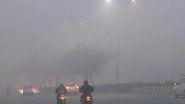Yes, you read that right, we are not done yet to live with the scare of possible threats, one after another. This year, several data have revealed celestial objects, which passed the Earth, thankfully not colliding the planet. The space rock, dubbed 2020 OY4 that passed on July 28 is said to be the closest encounter for a year. But now, another object, may come even closer, potentially passing at an incredibly close distance. The Center for Near-Earth Object Studies (CNEOS), from NASA’s Jet Propulsion Laboratory, stated that the space rock, known as 2018VP1, is predicted to pass near Earth in November and it has 0.41% chance to hit the planet. So, should you be worried?
CNEOS tracks the near-Earth objects (NEOs) and suggests that asteroid 2018VP1 is expected to pass near Earth on November 2, this year. That’s one day before the US Presidential election. The space rock was first identified at Palomar Observatory, California, in 2018. According to NASA’s data, the space rock’s diameter is 0.002 km or about 6.5 feet. And the chance of hitting the planet is 0.41%. Car-Sized Asteroid 2020 QG Flew Past The Earth on Weekend Without Getting Noticed by Scientists; Know If It Was Doomsday-Inducing Event?
Should You be Worried?
According to NASA, there are three potential impacts; however, “based on 21 observations spanning 12.968 days,” the agency does not think, it has a direct impact on the planet. 2018VP1, is not considered a “potentially hazardous object,” because of its small size—with a diameter of 0.002 km. It is important to note here that the potentially hazardous objects—usually asteroids or comets, are those which have an orbit taking them close to Earth and large enough to cause significant damage, if they ever hit the planet.
Asteroids are explained as minor planets, especially of the inner Solar System. Again, larger asteroids, are also referred to as planetoids. There are a lot of asteroids in our solar system, and most of them live in the main asteroid belt—a region between the orbits of Mars and Jupiter. Again, some are also found in the orbital path of planets.
(The above story first appeared on LatestLY on Aug 23, 2020 01:18 PM IST. For more news and updates on politics, world, sports, entertainment and lifestyle, log on to our website latestly.com).













 Quickly
Quickly












